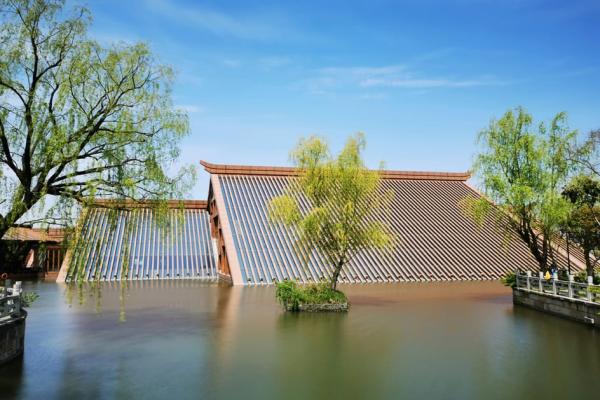The aviation industry accounts for 12% of all transport CO2 emissions and 2% of global carbon emissions. The sector is vital for connecting countries internationally and is an invaluable part of the world economy. It is one of the hardest sectors to decarbonise as no low-emission alternatives currently exist for long-distance flights that can match the speed of air travel. However, technology is emerging that can decarbonise short- and medium-haul flights and help achieve net-zero aviation.
Robert Hall, Executive Director of Resilience First, started the webinar on the role of technology in decarbonising aviation and aerospace by highlighting the recently launched Green Fuel Green Skies competition. The competition encourages the development of facilities that can turn waste in to sustainable aviation fuel. These technologies could reduce aviation emissions by 70% and potentially create 11,500 jobs.
Intel’s work in aviation decarbonisation
As chair, Xavier Petot, Account Manager EMEA at Intel Corporation, started with a comparison of the technological advances of aviation and computing. If it were possible for aviation to advance at the same speed as computing, a flight from London to New York could be completed on just a tank of kerosene in less than an hour. Xavier went on to talk about the two approaches being used by the aviation industry, namely reducing fuel consumption and replacing kerosene with a carbon-free alternative.
There are multiple solutions being pursued and Intel is supporting these with digital technology. Areas of work include airborne surveillance systems, decarbonising airports, 5G technology, weather stations and air-traffic control. It is also important that this work is carried out in a framework of responsibility, inclusivity, and sustainability to enable new technology to create progress in decarbonisation.
A global race to net-zero
The key address was given by Sameer Savani, Head of Innovation and Engineering at ADS. ADS represents over 1,100 companies in the aerospace sector which has an annual turnover of £33.9bn.
Environmental sustainability is becoming a core part of all aviation businesses, reflecting an increasing emphasis on decarbonisation around the world with China, the EU, and US becoming increasingly aligned in reaching net-zero. The CORSIA initiative comes in to effect this year, requiring airlines to offset their carbon emissions to a 2019 baseline. In the UK, aviation emissions are small today but are expected to be the largest emitting sector by 2050. This is due to industry growth and the difficulties in decarbonising the aerospace sector.
2020s – the decade for action
The industry has made huge strides in reducing emissions but it is widely understood that to reach net-zero a different approach will be required due to the complexities of decarbonising. The UK has enshrined net-zero emissions by 2050 in law, and the industry has established a plan to achieve this while still growing by 70%.
How do we reach net-zero in aviation?
There is growing pressure from the public and investors to decarbonise and, as aviation is a global industry, solutions will need to be global. Phasing out kerosene as a fuel will be difficulty as it is a ‘perfect fuel’ for aviation if it were not for its carbon emissions. There are also other emissions to consider but for the moment we need to focus on carbon as we understand the science well while being careful of unintended consequences.
There is a lot of debate still about how technology can help decarbonise aviation and the economics of different solutions. The truth is that there is no ‘silver-bullet' and the solution will probably involve a range of technologies. Technologies being looked at sustainable aviation fuels, hydrogen, battery, and hybrid electric solutions.
To make any of these solutions work there are a large number of stakeholders across the UK, and the wider world, that will need to be brought together.

A net-zero action plan for the UK
There is an increasing desire for the UK to be leader in aviation decarbonisation efforts given its history of aviation innovation. The establishment of the Jet Zero Council is an opportunity to create a whole-sector approach that could make a step-change in decarbonisation efforts. ADS has contributed by creating a high-level action plan which is available from the ADS website. Implementing this plan could result in huge economic opportunity by the creation of a new sustainable aviation fuel industry. Initially, efforts would focus on ‘waste fuel’ but could move on to exotic technologies like carbon-capture and green hydrogen in the future.
Looking to the future
Decarbonisation is central to the aerospace and aviation sector’s post-covid recovery strategy. The industry is committed to net-zero 2050 while maintaining growth in the sector. There are many complexities to overcome but work is under way to define a plan to tackle these.
Electrically powered helicopters
One potential solution for carbon-free air travel, over shorter distances at least, is electrically powered flight. Alex Oelling, Chief Digital Officer at Volocopter, spoke about the innovative battery powered helicopters being developed by Volocopter.
Even if we achieve decarbonisation of the car industry, we are still stuck on the ground with all the inherent problems that it brings such as traffic congestion. Electric helicopters could provide an alternative mode of transport for travelling around the city and making short journeys such as from town to airport.
Existing helicopter technology has a few drawbacks for flying over cities. They generate noise pollution and, although safe in general, they are less safe than aeroplanes. Electric helicopters are much quieter generating only 65dB, similar to a passing car. They are also potentially 110 times safer than conventional helicopters. For instance, having multiple rotors means if one fails the aircraft is still safe and can still fly safely. They are also self-flying so require new user interactions.

Caption: Volocopter electric helicopter (from the Volocopter website).
Discussion
The session concluded with the panel answering questions from the audience. The first question was around when the aviation industry could expect to return to pre-Covid levels of activity. Sameer said the industry expectation is around 2024/25, assuming vaccinations all going well, although no-one can be certain. Airlines are looking at making air travel even safer through things like bio-safe surfaces in aircraft and biomonitoring. Alex highlighted that they had already sold 1,000 tickets for the first flight on their helicopter but the world after Covid will be different and digital technology will have changed how much people meet in person.
The panel were also asked about aviation fuel alternatives like biofuel, electric power, wind and solar. Sameer answered that it depends on the type of journey. Battery is ideal for short flights, a hybrid of battery power and potentially technology like hydrogen could be an answer for medium-length flights. But for long-haul flights kerosene will be difficult to replace due to its high energy-density.
Alex pointed out that battery technology is improving all the time and aircraft will be easily upgradeable as new battery technology evolves. There will also be transfer from technology developed for small aircraft to larger aircraft over time.
Sameer saw wind and solar technology as not powering aircraft directly but more being used to create the fuel that aircraft will use.
The panel were asked to name the biggest challenges in achieving zero emissions. Alex thought that battery availability and cost, especially given competition for resources from the automotive industry. He also mentioned the need to certify new technologies as safe is a time-consuming process that will slow things down. Sameer suggested decarbonisation would be achieved in three ways: improving existing technology to reduce carbon output, developing hybrid technology, and sustainable aviation fuel. He also pointed out that 10% of aviation emission is not from aircraft, and airports and external facilities need to adapt to avoid becoming a bottleneck.
Alex was asked about managing physical and digital security for their helicopters and what emergency procedures there are. He replied by highlighting the use of encrypted communication and new innovations to keep the digital side secure from external tampering. From the safety side, the helicopters always know the nearest emergency place to land plus air-traffic control techniques to monitor where each helicopter is as well as other flying objects (including birds!) in the area.

Caption: The panel, clockwise from top left: Sameer Savani (ADS), Alex Oelling (Volocopter), Robert Hall (Resilience First) and Xavier Petot (Intel).
An edited version of the on-demand recording of the video can be viewed here.



